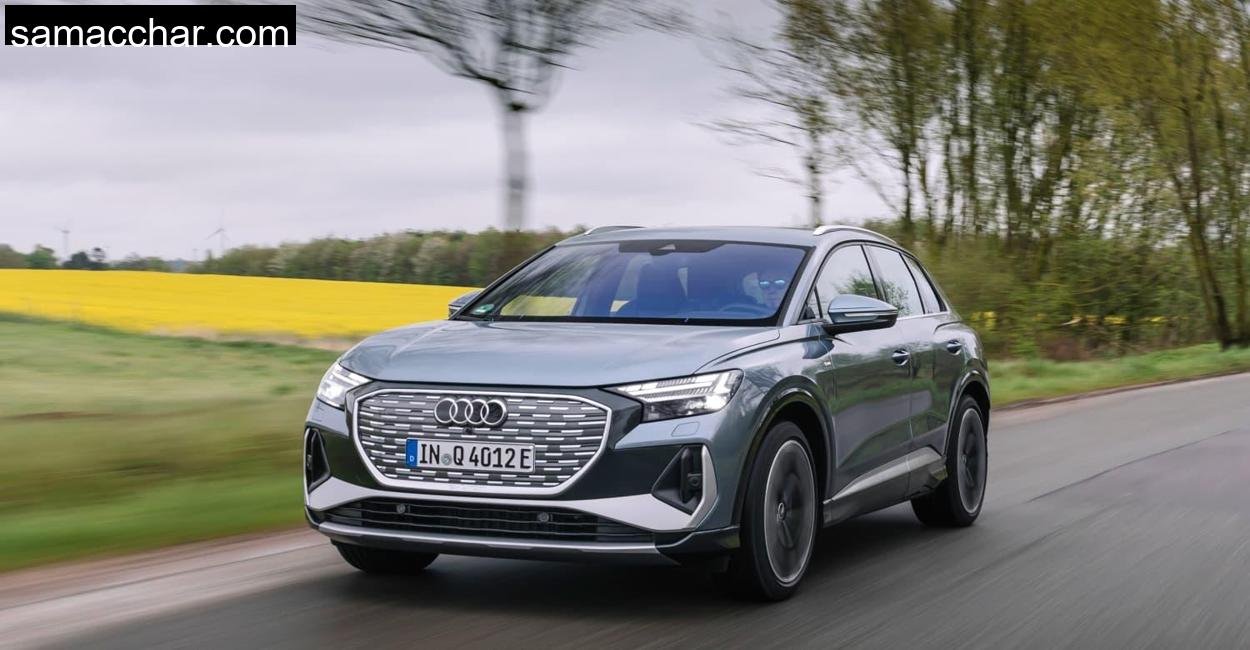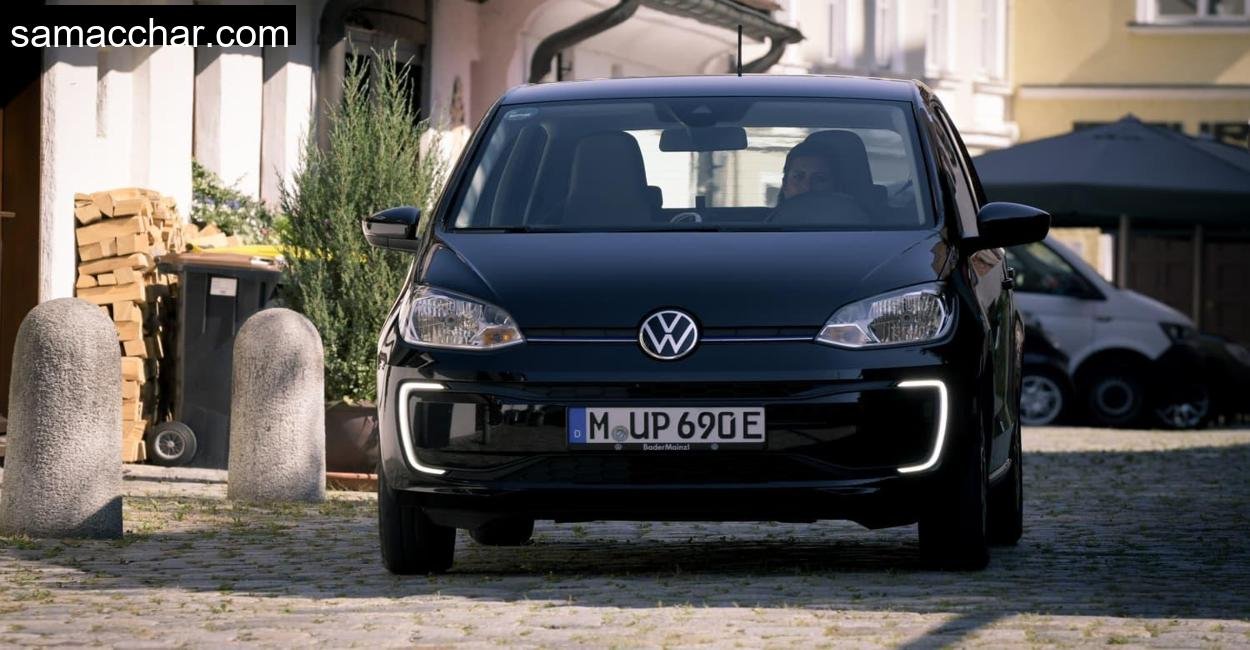Material appearance not “premium”
Let’s get this out of the way. The Q4 might wear four rings and come with a base price above €47,000,but not every inch inside lives up to the Audi name. There’s a lot of black plastic in here, and while the dashboard’s top is softly foamed, the rest, including the entire rear door panels, is hard, scratchy plastic. It feels more like a VW ID.5 than a downsized e-tron GT.
Wipe down the high-gloss surfaces with the wrong cloth and you’ll get permanent micro-scratches. Fingerprints show up like neon signs. For a car that tipped the test scale at over €71,000, that’s disappointing. I expect more from Audi, and frankly, the Q4 doesn’t give it, at least not in material quality.
That said, Audi’s design language still shines through. The flat-topped steering wheel, floating center console, and dual 10-inch screens create a modern, tech-forward look. The optional AR head-up display was an eye-catcher too, projecting directional arrows onto the road like a ghostly drone was pointing the way. Gimmicky? Maybe. But strangely useful when navigating Süntel’s fast-changing corners.
Audi Q4 e-tron: Plenty of space in the interior
Despite being “compact,” there’s nothing cramped about the Q4. I’m 1.88 meters tall and never once felt squeezed, whether driving or sitting behind myself in the second row. The flat floor (thanks to the lack of a transmission tunnel) adds serious legroom in the back.
However, if you’re tall, the Sportback shape has a penalty: headroom in the rear. Anyone over 1.85 meters will brush their scalp on the roof lining. It’s the price of those sleek looks.
The trunk, on the other hand, is usable and well-shaped: 450 liters with the seats up, 1350 with them folded. Loading height is low, and there’s a bit of extra cable storage under the floor. No frunk, though, a bit of a miss, especially when you consider the space under the short hood is just… unused.
Sporty driving performance in the Audi Q4
Now, the good stuff. The Süntel is a perfect place to separate boring EVs from those with soul. Fast sweepers, mid-speed corners, sharp climbs, this terrain tells you a lot in a short time.
And the Q4 Sportback 45 e-tron? It moves. Fast.
0–100 km/h isn’t where it impresses the most, it’s the punch from 60 to 100 and 80 to 120. The dual-motor 210 kW (286 hp) setup pushes 545 Nm of torque to all four wheels, and it’s relentless. From a tight hairpin, I’d flatten the throttle and the Q4 would simply launch. No hesitation, no drama, just a deep hum and an unbroken wave of thrust.
The updated chassis and 20-inch Pirelli Scorpion Elect tires have transformed the car. The older Q4 I drove last year on low-rolling resistance rubber felt vague, underdamped, unsure of itself. But this? Planted. Tight. Accurate.
Through the Süntel curves, I could feel the battery weight sitting low in the chassis, anchoring the car through long-radius bends. The ESP tuning is sorted now too, it lets you drive, intervene smoothly when needed, and never panics.
And with three-stage recuperation via paddle shifters, I could one-pedal my way down long descents without ever touching the brake. It’s not a Tesla-style full stop, but it’s well-judged and natural.
20.4 kWh power consumption in the test
We tracked real-world consumption throughout the 123 km Süntel loop, uphill, downhill, city segments, and open stretches. Final average? 20.4 kWh/100 km, including charging losses.
Not groundbreaking, but honestly good. Especially considering the car’s 2.1-ton weight, wide tires, and AWD. Charging from 0 to 100% will take 87.3 kWh from the grid, inevitable with losses, but still respectable.
At that rate, you’ll see around 380–430 real kilometers per charge, depending on driving style and conditions. Not the promised 563 km WLTP, but enough for everyday use.
Audi Q4 e-tron quattro with two engines
The dual-motor quattro system makes all the difference on narrow rural roads. I drove part of the route in a single-motor rear-drive Q4 40 e-tron previously, and while it was fine, you feel the extra security and composure from all-wheel drive when pushing.
The torque distribution is invisible but effective. No torque steer, no traction issues, even on damp or leaf-strewn corners in the forest. It just hooks up and goes.
Also worth noting: with the quattro, you gain towing capacity (up to 1400 kg braked), which turns this from an eco-machine into something you can use for mountain bikes or even small trailers.
Clever thermal management for the battery
Temperatures rose to nearly 30 degrees Celsius during our test, but the Q4 never suffered from battery derating or thermal limitations. Audi’s thermal management system is clearly well-developed.
Even after multiple full-throttle acceleration runs and regenerative descents, the power remained consistent. The cabin stayed cool too, thanks to an efficient heat pump and quiet ventilation system.
The configurator awakens expensive desires
The problem with the Q4 isn’t the base price, it’s how fast it balloons. Our test car rang up at over €71,000. Why? The paint (€1050), Matrix LED headlights (€1130), the AR head-up display (€1285), 20-inch wheels (€990), and the S line trim (€1750) all add up.
Add in driver assistance systems, adaptive cruise, top-tier navigation, and suddenly you’re paying luxury car money for something that still wears budget plastics. Audi really knows how to pull you through the configurator.
Conclusion
The Audi Q4 Sportback e-tron is a car that grows on you. Not because it overwhelms with luxury, because it doesn’t, but because it delivers where it matters: driving performance, range, charging efficiency, and packaging.
It’s not perfect. The interior quality should be better, and Audi’s price ladder is steep. But after hammering it through the Süntel, charging at a quiet village supermarket, and cruising home in silence, I can say this:
This is a serious EV. It drives like a proper Audi. And for a lot of people, it will be enough car, full stop.










